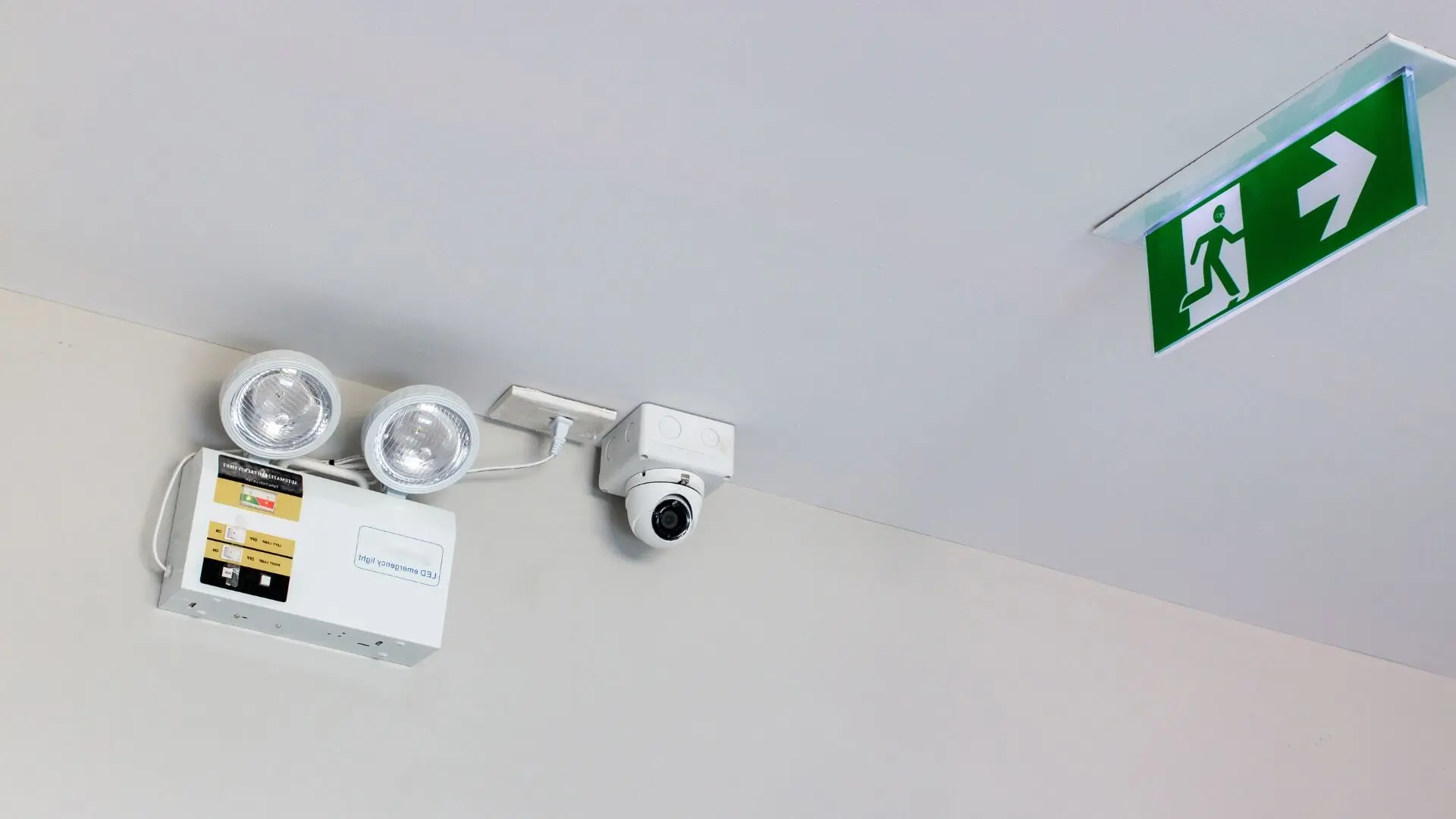The Unseen Guardian
Emergency lighting often goes unnoticed in our daily lives, but its importance becomes glaringly evident during critical moments. Whether it’s a power outage caused by extreme weather or an unforeseen emergency like a fire, proper lighting ensures safety and guidance. Emergency lighting systems are designed to illuminate escape routes, reduce panic, and provide visibility when the primary power supply fails. This invaluable technology plays a crucial role in minimizing risks and ensuring safety in both workplaces and homes.
The Importance of Emergency Lighting in Workplace Safety
Workplace safety is a top priority, and emergency lighting plays a fundamental role in creating a secure environment. Businesses are required by law to provide adequate lighting during emergencies to ensure employees can safely evacuate. Emergency lighting systems, such as exit signs and stairwell illumination, are vital for guiding people out of buildings in case of fires, earthquakes, or other disasters. These systems not only save lives but also help businesses comply with safety regulations, avoiding potential legal and financial repercussions.
According to the National Fire Protection Association (NFPA), emergency lighting is a standard requirement in commercial spaces, ensuring safe evacuation routes are adequately lit. When employees can see their way out, the likelihood of injuries or panic-related incidents significantly decreases.
Navigating Darkness Emergency Lighting at Home
Emergency lighting is just as vital in homes as it is in workplaces. Power outages can leave households plunged into darkness, exposing families to safety risks like falls, trips, and even burns from mishandling candles. Emergency lights ensure safe passage and help families regain control during such situations. These lights also prove invaluable for evacuations caused by emergencies such as gas leaks or fires.
Children and elderly family members are especially vulnerable in the absence of light, as they might struggle to find their way out. Battery-operated emergency lighting systems installed in strategic areas like hallways, stairs, and bedrooms can make all the difference between confusion and a safe exit.
Types of Emergency Lighting Systems A Comparative Overview
Emergency lighting systems come in various forms, each catering to specific needs. The most common types include self-contained units and central battery systems.
Self-contained units are highly convenient as they integrate the battery and lamp into a single fixture, making installation easy. These systems are ideal for smaller spaces, such as homes or small offices. On the other hand, central battery systems are more suitable for large facilities like multi-story offices or industrial warehouses. They connect multiple emergency lights to a centralized power source, offering greater reliability and energy efficiency.
Here’s a quick comparison of emergency lighting systems in different scenarios:
| Type | Best For | Features |
|—————————|——————————-|—————————————-|
| Self-contained Units | Homes, small businesses | Easy to install, lower cost, compact |
| Central Battery Systems | Large offices, warehouses | Centralized control, long-lasting power|
Installation and Maintenance Ensuring Reliability
Proper installation and regular maintenance are critical for the functionality of emergency lighting systems. An improperly installed system might fail to operate in emergencies, rendering it useless when it is most needed. During installation, professionals should ensure lights are installed in strategic locations, illuminating escape routes, exits, and high-risk areas.
Maintenance is equally important, requiring regular testing, battery checks, and replacements to ensure reliability. Monthly inspections and annual full-load tests are recommended to identify any potential malfunctions. Adopting a proactive approach to maintenance prevents unexpected failures and ensures the system functions seamlessly during emergencies.
The Cost-Benefit Analysis of Emergency Lighting
While the upfront cost of emergency lighting systems might seem significant, the long-term benefits far outweigh the initial investment. Installing emergency lighting enhances safety, protects lives, and mitigates potential liabilities for property owners and businesses. Non-compliance with safety standards or failure to provide adequate evacuation lighting could result in fines, lawsuits, or worse, loss of life.
Looking at the bigger picture, emergency lighting isn’t just an expense—it’s an investment in safety and peace of mind. Advanced systems, such as LED-based lighting, are energy-efficient, reducing both operating costs and environmental impact.
Regulatory Compliance and Standards for Emergency Lighting
Strict regulations govern the installation and operation of emergency lighting systems. Compliance with guidelines such as those set by OSHA (Occupational Safety and Health Administration) or NFPA ensures that buildings meet safety requirements. These standards establish the minimum requirements for the design, placement, and maintenance of emergency lighting.
Adherence to regulatory compliance is not just about avoiding penalties; it’s about prioritizing the safety of building occupants. Regular audits and inspections are essential for ensuring systems align with these standards, creating a secure environment for all.
Advancements in Emergency Lighting Technology
The world of emergency lighting has witnessed significant technological advancements in recent years. LED lighting has gained immense popularity due to its energy efficiency, durability, and brightness. Smart emergency lighting systems are also making waves, offering features such as real-time system monitoring, automated testing, and fault notifications.
Additionally, rechargeable lithium-ion batteries have improved the reliability and performance of emergency lighting systems, reducing the need for frequent replacements. These innovations not only enhance safety but also lower operational costs for businesses and homeowners.
Case Studies Real World Impact of Emergency Lighting
Case studies vividly highlight the life-saving impact of emergency lighting systems. For instance, during Hurricane Sandy, emergency lighting in flood-prone buildings helped thousands of residents safely evacuate their homes. Similarly, high-rise office buildings equipped with central battery systems have facilitated quick evacuations during power outages, reducing the risk of injuries.
Such real-world examples underscore the importance of reliable emergency lighting systems in safeguarding lives. They serve as a reminder that even the simplest systems can have life-changing, or even life-saving, outcomes.
Illuminating the Path to Safety
Emergency lighting is more than just a backup measure; it’s a critical safety feature that protects lives and property. Whether in the workplace or at home, these systems ensure visibility during emergencies, prevent accidents, and guide people to safety.
By installing and maintaining reliable emergency lighting, you not only comply with safety standards but also invest in a safer future. With advancements in technology like LED and smart systems, the possibilities for improving emergency lighting are endless. Remember, safety begins with being prepared, and emergency lighting is an indispensable part of that preparation.

